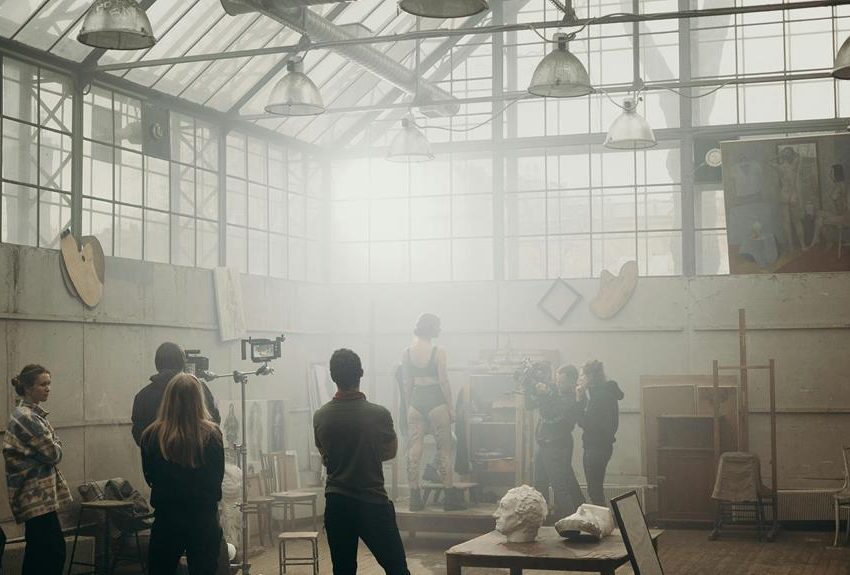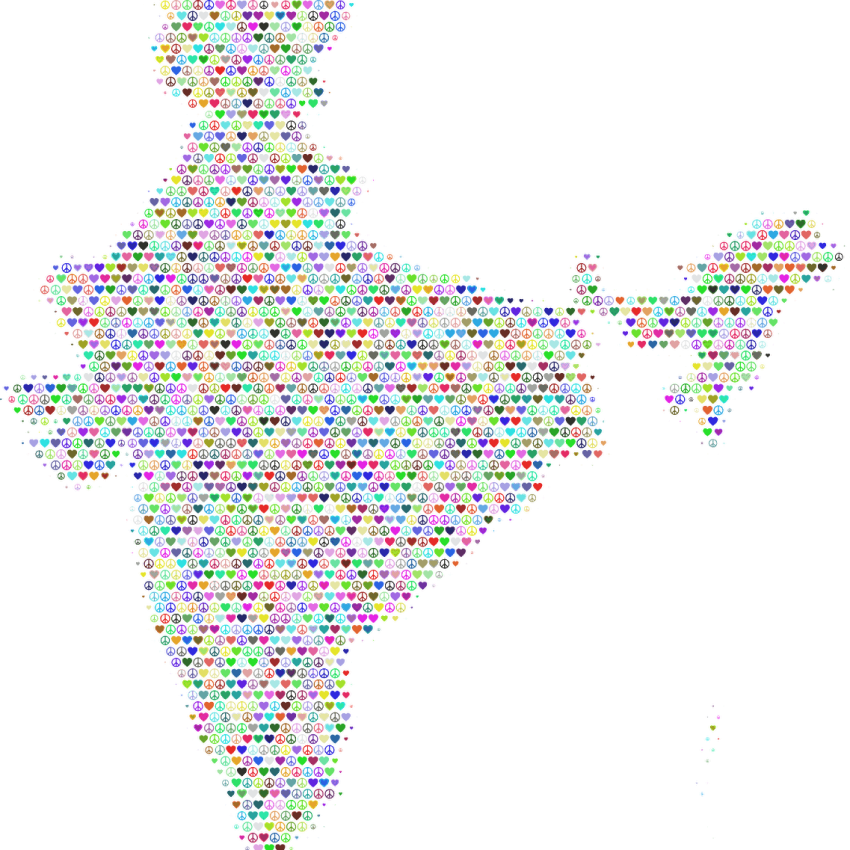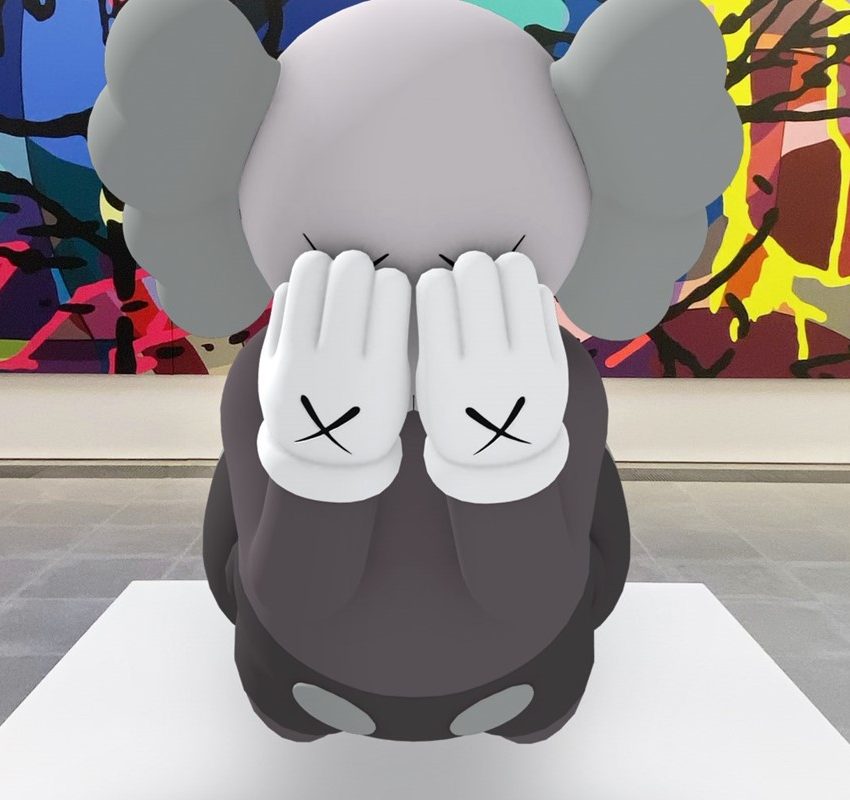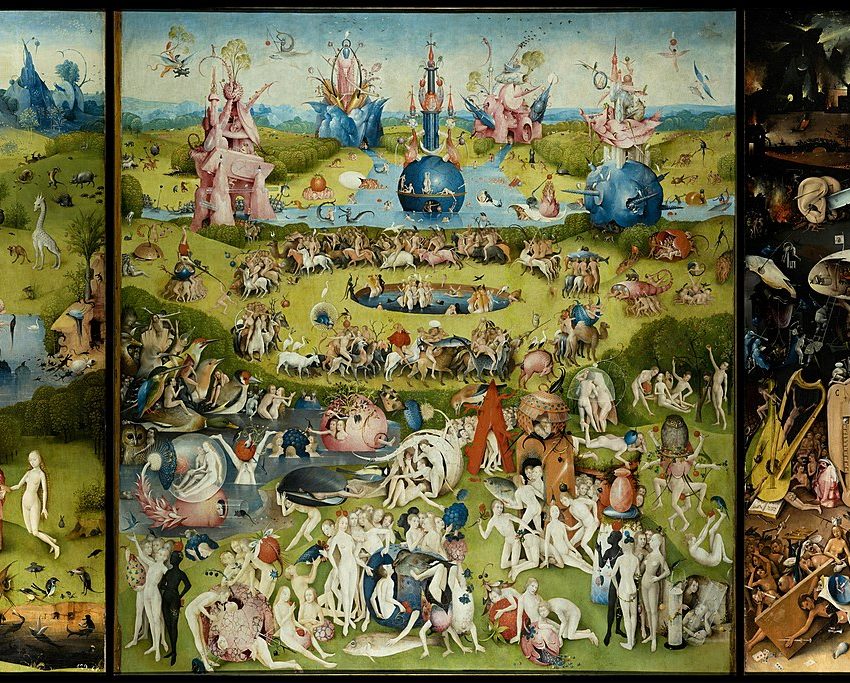Unlocking the Secrets of Geometric Art
Step into a world where angles and shapes dance harmoniously to create mesmerising works of art – welcome to the realm of Geometric Art.
Beyond mere lines and proportions, geometric art is a tapestry woven with mathematical precision and artistic ingenuity. In this visual journey, we delve deep into the sacred geometry that underpins masterpieces, from ancient civilizations to contemporary showcases, highlighting the continuum from historical geometric abstraction to modern geometric wall art.
Gaze upon mosaic wonders crafted by the hands of ancient artisans, each tile resonating with symbolic significance. Discover how geometry was a language for expressing cosmic order and spiritual truths across diverse cultures.
Our quest is to unlock the enigmatic allure of these patterns that transcend time – inviting you to uncover secrets hidden within the intersecting lines and sacred ratios that shape our perception of beauty.
Origins of Geometric Art
Geometric art has roots deeply intertwined with ancient civilizations’ cultural and artistic tapestry. In Mesopotamia, intricate geometric motifs adorned pottery dating back to 4500 BC, showcasing early humans’ fascination with geometric shapes.
Throughout history, the Egyptians utilized geometric precision in their monumental structures; the Great Pyramid of Giza is an iconic example of geometric mastery, symbolizing mathematical harmony and spiritual significance.
The Greeks further elevated geometric art, infusing it with philosophical meaning and aesthetic brilliance, often celebrated in contemporary wall print collections that pay homage to these ancient inspirations.
From Euclidean geometry to the golden ratio, Greek artists incorporated mathematical principles into their sculptures and architecture, laying the groundwork for a timeless aesthetic that resonates even today.
Islamic art brilliantly blended mathematics and spirituality in exquisite geometric patterns adorning mosques like the Alhambra in Spain, showcasing a fusion of science and art that captivates viewers with its mesmerizing complexity.
Greece
Greece has long been celebrated for its pioneering application of geometric principles across various artistic disciplines, including the early forms of geometric abstraction that have influenced modern art.
From sculpture to textiles and even traditional art forms like decorative art and painting, the Greeks were among the earliest to embrace geometric designs.
However, while they are often credited as among the first, it’s essential to recognize that the use of geometric motifs predates Greek civilization by millennia and extends across diverse cultures.
Evidence of geometric art spans the globe and stretches back through history, becoming a foundational aspect of ancient and modern art, including geometric painting and geometric wall art.
From Mesolithic artifacts in Southern Scandinavia adorned with zigzag patterns to African art and Aboriginal Australian creations, geometric art flourished in various forms and periods, including transitioning into geometric wall art and canvas pieces in modern decor.
Claims of being the “first” in this regard are often rooted in national or cultural pride rather than objective truth, as archaeological discoveries continually challenge established narratives.
During the Hellenistic period, following the death of Alexander the Great in 323 BCE, Greek art reached new heights in its portrayal of the human form.
This era emphasised the accurate representation of anatomy and three-dimensional perspective, contrasting with the stylized figures of earlier Greek Classical art.
Geometric art reached its zenith during the Greek Dark Ages between 900 BCE and 700 BCE. It was characterized by abstract patterns utilizing basic geometric shapes like triangles, circles, and rectangles, sometimes infused with symbolism.
Later, during the Greek Classical period (510-323 BCE), geometric motifs were integrated with allegorical narratives, depicting culturally significant events such as triumphs over empires like the Persian Achaemenid dynasty led by King Darius III.
This conflict between the Greek city-states and the Persian Empire, notably exemplified by Alexander the Great’s victories, underscores enduring themes of power struggles and the rise and fall of empires throughout history.
In essence, the legacy of Greek geometric art transcends mere chronology, reflecting universal themes and the timeless human impulse for creativity and expression amidst the ebb and flow of civilizations.
Contemporary geometric abstract art
Fast-forward to contemporary times, pioneers like Dutch artist Piet Mondrian drew inspiration from early geometric artworks to create their renowned abstract compositions.
Mondrian’s grids of primary colours intersecting clean lines demonstrate a modern interpretation of ancient geometries, proving that the allure and influence of geometric art transcend centuries.
Today, artists continue to pay homage to these historical roots while pushing boundaries with innovative applications, ensuring that the secrets of geometric art remain as captivating and relevant as ever.
Proportion in geometric artworks
Proportion is another fundamental mathematical principle artists leverage to create aesthetically pleasing geometric artworks, incorporating abstract painting techniques that often result in a set of 3 prints for cohesive wall decor.
The Golden Ratio, a mathematical ratio found in nature and revered for its aesthetic properties, helps artists achieve visual balance and harmony in their compositions, a principle beautifully applied in sets of 3 prints that adorn modern living spaces.
From ancient architects designing majestic pyramids with precise proportions to contemporary artists creating intricate optical illusions using mathematical grids, proportion acts as a guiding principle that shapes the captivating allure of geometric art.
In geometric artistry, artists often employ mathematical rules to construct mind-bending patterns and illusions that challenge perceptions and ignite wonder.
M.C. Escher’s iconic works, where he skillfully played with perspective and geometry to craft impossible structures and infinite loops, are a perfect inspiration for metal wall art that captures the essence of his mathematical ingenuity.
By understanding mathematical concepts like tessellation or fractals, artists can create complex yet appealing designs that resonate with audiences on both an intellectual and aesthetic level.
Ultimately, the fusion of artistic creativity with mathematical precision elevates geometric art to a realm where beauty meets intellect in perfect harmony, as seen in the dynamic field of geometric abstraction and modern art canvases.
Modern Applications of Geometric Art
In contemporary art, geometric elements continue to captivate artists and audiences with their fusion of mathematical precision and aesthetic allure.
Today’s creators seamlessly weave traditional geometrical principles with cutting-edge technologies, resulting in diverse artworks pushing the boundaries of perception and creativity, such as digital art prints embodying geometric abstraction.
Modern artists are reshaping our understanding of geometric art by embracing the intersection between technology, mathematics, and art.
the rise of fractal art
One prominent trend within modern geometric art is the rise of fractal art, where complex mathematical equations generate intricate patterns that mesmerize viewers with their infinite detail. Artists like Vicky Brago-Mitchell use fractals to explore the beauty of chaos theory and self-similarity in their digital compositions, blurring the lines between art and mathematics. Similarly, 3D optical illusions have emerged as a dynamic form of geometric expression, as seen in the works of Felice Varini, who manipulates space and perspective to create mind-bending illusions that challenge conventional notions of geometry in art.
Through digital platforms and software tools like Adobe Illustrator or Processing, artists can experiment with geometry in previously unimaginable ways. This marriage of technology and artistic vision enables creators like Andy Gilmore to craft mesmerizing geometric designs that harmoniously blend symmetry, color, and intricate patterns. By leveraging these modern tools, artists can transcend traditional limitations and delve into realms of creation that seamlessly combine mathematical rigor with artistic innovation.
Symbolism and Meaning in Geometric Art
Geometric shapes have long been imbued with symbolic significance. They offer artists a language to communicate deeper meanings beyond their mathematical precision, as seen in artworks from geometric paintings to intricate geometric wall art.
Circles, for instance, represent unity and infinity due to their continuous form without beginning or end, a concept widely interpreted in circular metal wall art that adds a touch of modernity and infinity to any room.
In the famous painting “The Starry Night” by Vincent van Gogh, the swirling circular patterns evoke a sense of cosmic interconnectedness and harmony, reflecting the artist’s spiritual view of the universe.
Symbolism
Triangles hold diverse symbolism across cultures, often signifying balance, stability, or the trinity in religious contexts.
The Fibonacci sequence, expressed through the Golden Ratio found in triangles and other geometric forms, symbolises growth and natural beauty, inspiring geometric wall art decor that integrates this principle into visually appealing designs.
Artists like Leonardo da Vinci incorporated these mathematical principles into their works; for instance, in his iconic “Vitruvian Man,” where da Vinci used geometry to explore the proportionality of the human body as a microcosm of the universe.
Spirals are another intriguing geometric motif rich in symbolism.
Spirals are often associated with evolution, cycles of life, and cosmic energy flow, prominently featured in ancient petroglyphs, modern artworks, and abstract paintings, including canvas wall art that captures these timeless concepts.
The mesmerizing spiral staircase at the Vatican Museums in Rome showcases architectural brilliance. It is a metaphor for ascension towards enlightenment, reminiscent of the spiraling designs in geometric painting and abstraction.
Through these examples and interpretations, geometric art becomes a visual language through which artists express profound ideas about existence, spirituality, and interconnectedness, often explored in minimalist wall art that captures the essence of these themes.
Colour Theory in Geometric Art
Color theory plays a pivotal role in accentuating the beauty and impact of geometric art. Colour schemes can transform a simple geometric pattern into a vibrant visual spectacle.
Artists leverage colour combinations to evoke specific emotions or create dynamic contrasts within their artworks.
For instance, the juxtaposition of warm tones like reds and oranges with cool blues and greens can enhance the depth and dimensionality of geometric compositions, drawing the viewer’s gaze into the intricate design.
aesthetic appeal and emotional resonance
In geometric art, colour theory influences aesthetic appeal and emotional resonance, creating geometric art prints that captivate viewers through their vivid abstraction and design.
uWhen paired with geometric forms, different hues can evoke varied moods and perceptions, as exemplified in the dazzling and emotionally resonant geometric art prints found in galleries today.
For example, bright, bold colours like yellow and magenta can evoke energy and excitement in abstract geometric pieces.
At the same time, pastel shades like soft blues and lavenders may induce a sense of calmness and tranquility in more serene compositions. By understanding how colors interact with shapes, artists can manipulate the viewer’s emotional response to their artwork.
Renowned artists throughout history have masterfully combined geometry with colour to create mesmerising visual experiences.
Wassily Kandinsky, a pioneer of abstract art, utilised vivid hues and precise geometric shapes to convey spiritual insights through his paintings.
His work “Several Circles” exemplifies his ability to harmoniously blend mathematical precision with a rich palette of colours, creating an immersive experience that transcends mere aesthetics.
Similarly, Bridget Riley, known for her op-art creations, manipulates geometric patterns and contrasting colors to produce optical illusions that challenge perception and invite viewers into a realm where geometry meets chromatic vibrancy in thrilling ways.
Impact of Geometric Art on the Design Industry
Geometric art has transcended its traditional boundaries and is now a significant influencer in the design industry, setting trends across various creative fields.
In fashion, renowned designers draw inspiration from geometric shapes to create bold and eye-catching patterns on garments, paralleled in the decor world by abstract wall art prints that make a bold statement in any room.
From the iconic Mondrian dresses by Yves Saint Laurent to contemporary streetwear brands integrating intricate geometric prints, these designs showcase the enduring allure of geometric motifs in fashion.
Interior designers also use geometry to create visually striking spaces with light, shadows, and perspectives.
Whether it’s the minimalist elegance of Scandinavian interiors with clean lines and geometric forms or the eclectic charm of Art Deco style incorporating geometric patterns into furniture and decor, geometry adds a sense of order and sophistication to interior design projects.
By skillfully balancing shapes and proportions, designers transform living spaces into harmonious environments that energize and inspire those who inhabit them, often incorporating geometric painting or geometric wall art to achieve this effect.
Geometry and Graphics
In graphic arts, geometric elements have become a staple for conveying modernity and sophistication, as seen in contemporary abstract wall art and canvas prints that feature bold geometric designs.
Logos, branding materials, posters, and web designs often feature geometric patterns to communicate clarity, precision, and a contemporary aesthetic, as seen in the widespread use of geometric line art in minimalist wall art designed to enhance corporate and personal spaces.
The clean lines and structured compositions associated with geometric art create a sense of balance and visual appeal in diverse marketing campaigns or digital platforms, often through geometric art prints and geometric painting.
Designers leverage geometrical principles for decoration and as strategic tools to enhance brand identity and user experience.
For those looking to incorporate geometric elements into their design projects, practical tips can elevate their work to new heights, especially when considering incorporating line art and geometric wall art decor to enhance the visual appeal of their creations.
Experimenting with different shapes, playing with symmetry or asymmetry, and exploring color combinations inspired by color theory are just some ways to infuse a touch of geometric artistry into designs.
Whether creating a mesmerizing mural inspired by tessellations or designing a dynamic logo using sacred geometry principles, understanding how to integrate geometry thoughtfully can add depth and character to any design endeavor in today’s visually-driven world.
Innovations in Geometric Art Techniques
Geometric art has continuously evolved, with modern artists embracing innovative techniques and tools to redefine the boundaries of this captivating art form.
By pushing the traditional confines of geometric art, contemporary creators are delving into new realms of creativity that inspire awe and fascination.
One such innovation is integrating technology like computer-aided design (CAD) software, allowing artists to explore intricate geometrical patterns with unparalleled precision and complexity, often culminating in sophisticated geometric art prints and modern abstract wall art.
Geometry and Technology
Leading figures in the field are revolutionizing geometric art by blending traditional methods with cutting-edge technologies.
These visionaries experiment with unconventional materials and processes to craft geometric masterpieces that challenge perceptions and provoke thought.
For example, artist Janet Echelman utilizes 3D modeling software to design monumental aerial sculptures that dynamically interact with wind and light, creating mesmerizing geometric forms suspended in space.
Innovative approaches include combining geometric art with other disciplines like science or environmental studies, resulting in thought-provoking installations that address contemporary issues.
By collaborating across different fields, artists can infuse deeper layers of meaning into their geometric creations, sparking conversations about society, nature, or even the cosmos.
Augmented reality (AR) and virtual reality (VR) further push the boundaries of geometric art by offering immersive experiences that transport viewers into mesmerizing geometric landscapes beyond physical constraints.
Through these advancements in techniques and tools, geometric art continues to captivate audiences worldwide while opening new avenues for artistic expression, including creating abstract wall art that echoes geometric patterns.
The marriage of tradition with innovation propels this genre into uncharted territory where creativity knows no bounds, inspiring future generations to unlock even more secrets hidden within the mesmerizing world of geometric art.
Geometric Print and Abstract Wall Art for Home Decor
In the realm of wall art, geometric designs reign supreme, captivating the eye with their perfect symmetry and abstract allure.
From geometric abstract walls to mid-century modern pieces, many artists around the world harness the power of concentric circles and precise shapes to create stunning artworks.
Whether it’s rustic wall art adorning a farmhouse wall or boho-inspired prints adding flair to a room wall, the versatility of geometric art knows no bounds.
Artists use metal geometric wall decor and art posters to bring geometric sets of 3 to life, infusing green accents or bauhaus prints for added depth.
For home or office, the appeal of modern abstract art in its myriad forms, from boho to bauhaus, leaves an indelible impression on any space.
Boho wall art and poster prints, along with wall pictures and canvas prints, offer diverse options to enhance a wall art living room or add a touch of boho style to any setting.
With decor abstract and mid-century modern abstract pieces, artists explore the boundaries of expression,
often culminating in sets of 4 or boho abstract wall art that evoke a sense of nostalgia and wonder.
The integration of use cookies and similar techniques in the presentation and distribution of these artworks ensures that they reach audiences worldwide, seamlessly blending technology with artistic vision.
The Future of Geometric Art
In delving into geometric art’s rich history and intricate beauty, we uncover a tapestry woven with mathematical precision and artistic expression.
From ancient civilizations to modern digital realms, the allure of geometric patterns transcends time and culture, connecting artists, mathematicians, designers, and art enthusiasts in a shared fascination.
As we peer into the future of geometric art, the possibilities seem boundless. Interdisciplinary collaborations between artists and scientists might yield innovative creations that merge traditional craftsmanship with cutting-edge technology.
By embracing advancements in virtual reality, 3D printing, or artificial intelligence, geometric art could transcend its current boundaries to captivate new audiences and further push the limits of imagination.
The evolution of this genre holds promise for sparking creativity across various fields, reshaping our perceptions of visual aesthetics in ways we’ve yet to imagine, and influencing the creation of contemporary wall art prints that reflect these emerging trends.
conclusion
In conclusion, geometric art holds a timeless allure that transcends cultural boundaries and spans millennia.
From ancient civilisations to modern-day artists worldwide, exploring geometric figures, shapes, and forms has been a source of inspiration and creativity.
Whether it’s a perfect geometric wall art set of 3 adorning a living room wall or a minimalist gallery wall featuring abstract geometry, artists explore the depths of geometry art to evoke a sense of harmony and balance in home decor.
Through mediums like metal wall decor, wood wall hangings, or canvas prints, geometric art design becomes a manifestation of personal style, whether it’s mid-century modern, abstract, or boho-inspired.
The use of colors, from orange geometric accents to black wall art contrasts, adds depth and vibrancy to abstract artworks, while concentric circles and Bauhaus prints offer intriguing visual narratives.
As we navigate the modern landscape of home or office decoration, geometric art continues to be a cornerstone of artistic expression, offering a language of shapes and forms that resonate with our aesthetic sensibilities.
With each wall decoration, poster set, or set of 6 prints, geometric art invites us into a world where minimalism meets sophistication, and every piece tells a story of its own.











